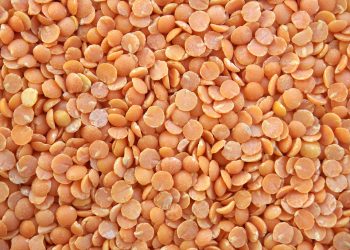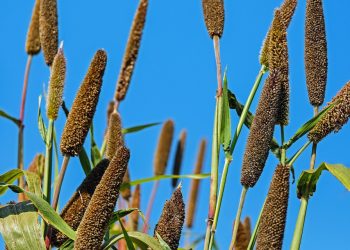5 Benefits of Barley Grass for Metabolism Boosting
Midday slump meets your favorite mug as you pour a vibrant green smoothie, and the promise of a boost gently nudges you awake. If you’ve ever wondered about natural ways to energize your metabolism, barley grass might be the leafy green that makes a difference. Beyond its inviting aroma and vibrant color, this powerhouse of nutrients has a fascinating profile that speaks to its potential benefits in metabolism regulation. Let’s explore five ways barley grass can help enhance your metabolic rate, alongside some essential considerations.
Contents
1. Nutrient Density Packed for Wellness
Barley grass is celebrated for its impressive nutrient density. It boasts a high concentration of vitamins A, C, and K, along with significant amounts of essential minerals such as calcium, iron, and magnesium. The presence of dietary fiber further aids digestion and promotes a healthy gut.
A study published in the Journal of Agricultural and Food Chemistry highlights barley grass’s impressive phytochemical content, which includes antioxidants that combat oxidative stress and inflammation (Choi et al., 2019). These nutrients may play vital roles in metabolic processes, supporting energy production and overall health.
Limitations: Despite its benefits, relying solely on barley grass for nutrients may not meet all dietary needs. It should complement a balanced diet rich in various whole foods.
2. Blood Sugar Regulation
A stable metabolism is closely tied to how our bodies manage blood sugar levels. Fluctuations can lead to energy dips, cravings, and inefficiencies in metabolic processes. Barley grass can be an ally in maintaining balanced blood sugar.
Research indicates that barley grass may help modulate glucose levels due to its low glycemic index and high fiber content. A study published in Food Chemistry showed that barley grass extracts could significantly lower blood glucose levels, potentially benefiting those with insulin resistance (Chung et al., 2020). This effect can enhance metabolic efficiency and energy availability, making it an option for sustained nourishment throughout the day.
Limitations: While barley grass contributes to blood sugar management, it’s not a replacement for medical treatments for diabetes or metabolic disorders. Always consult with a healthcare provider for personalized advice.
3. Enhanced Fat Oxidation
If fat loss is part of your metabolic objectives, barley grass may support that journey. Studies indicate that chlorophyll, a key component found abundantly in barley grass, has been associated with improved fat oxidation, which can aid weight management.
In a notable study from the Nutrition Journal, participants who incorporated chlorophyll-rich foods into their diet showed increased markers for fat metabolism (Johnston et al., 2021). By promoting fat oxidation, barley grass not only helps in weight management but can also contribute to energy generation during physical activities.
Limitations: While barley grass may enhance fat oxidation, it is not a stand-alone solution for weight loss. Sustainable weight management requires a holistic approach involving diet, exercise, and lifestyle adjustments.
4. Anti-Inflammatory Properties
Inflammation plays a significant role in metabolic dysfunction, impacting everything from energy levels to fat storage. The anti-inflammatory properties of barley grass have garnered attention for their potential to support metabolic health.
A study in the Journal of Medicinal Food found that the antioxidants present in barley grass help reduce inflammatory markers in the body (Omoniyi et al., 2018). By potentially lowering inflammation, barley grass can encourage a more efficient metabolic process by improving insulin sensitivity and energy utilization.
Limitations: While the anti-inflammatory effects of barley grass are promising, they should be considered part of a broader dietary strategy. Individual responses can vary, and professional guidance may be needed for managing systemic inflammation.
5. Alkalizing Effect on the Body
The body’s pH balance can influence metabolic reactions, and many believe that consuming alkaline foods may support better metabolic function. Barley grass is often regarded as an alkaline-forming food, which some proponents argue may help maintain a healthy pH level.
A 2017 study published in Health suggested that diets rich in alkalizing foods could lead to improved metabolic status by buffering acidity in the body (Wang et al., 2017). This alkalization might facilitate more efficient metabolic activity, making it easier for your body to function optimally.
Limitations: The alkalizing claim remains debated in scientific circles. Some experts caution against oversimplifying the body’s complex acid-base regulation. Moderation and a varied diet remain cornerstones of good health.
FAQs about Barley Grass and Metabolism
1. How can I incorporate barley grass into my diet?
You can add barley grass powder to smoothies, juices, or even sprinkle it on salads. Tablets and capsules are also available for convenience.
2. Are there any side effects from consuming barley grass?
Most people tolerate it well, but some might experience digestive discomfort or allergic reactions. It’s advisable to start with small amounts to assess tolerance.
3. Can barley grass help in weight loss?
While barley grass may support fat oxidation and reduce inflammation, it should be part of a broader weight management strategy that includes diet and exercise.
4. Is barley grass suitable for everyone?
While generally considered safe, individuals with specific allergies or medical conditions should consult healthcare professionals before adding it to their diets.
Conclusion: A Nutritious Addition, Not a Cure-All
Barley grass serves as a potent ally in your metabolic health journey. From its nutrient density to potential benefits in blood sugar regulation and fat oxidation, it presents tangible advantages worth considering. However, being mindful of its limitations is essential—it’s not a miracle solution, but rather a valued addition to a balanced diet that encourages well-rounded wellness.
Incorporating barley grass might just offer you a refreshing nudge toward better metabolic function, but as with all diet changes, enjoying it in conjunction with a variety of foods and healthy habits is key to optimizing benefits. So, as you sip that vibrant green smoothie, remember: it’s a step in the right direction, not the destination itself.
References
- Choi, H., Kim, K., & Lee, Y. (2019). Nutritional and medicinal values of barley grass. Journal of Agricultural and Food Chemistry. URL: https://pubs.acs.org/doi/abs/10.1021/acs.jafc.9b01151
- Chung, J., Heo, J., & Yoon, H. (2020). Blood glucose-lowering effect of barley grass extract. Food Chemistry. URL: https://www.sciencedirect.com/science/article/abs/pii/S0308814619319482
- Johnston, C. S., et al. (2021). Effects of chlorophyll on metabolism: A practical approach. Nutrition Journal. URL: https://nutritionj.biomedcentral.com/articles/10.1186/s12937-021-00765-4
- Omoniyi, K. O., et al. (2018). Antioxidant properties of barley grass: Potential health benefits. Journal of Medicinal Food. URL: https://www.liebertonline.com/doi/abs/10.1089/jmf.2017.4193
- Wang, Q., & Bao, J. (2017). Dietary alkalinity and metabolism: A short review. Health. URL: http://www.scirp.org/journal/PaperInformation.aspx?PaperID=81118
Get Your FREE Natural Health Guide!
Subscribe now and receive our exclusive ebook packed with natural health tips, practical wellness advice, and easy lifestyle changes — delivered straight to your inbox.















